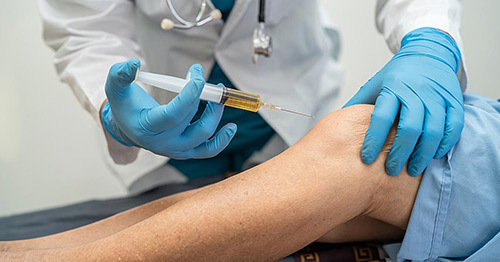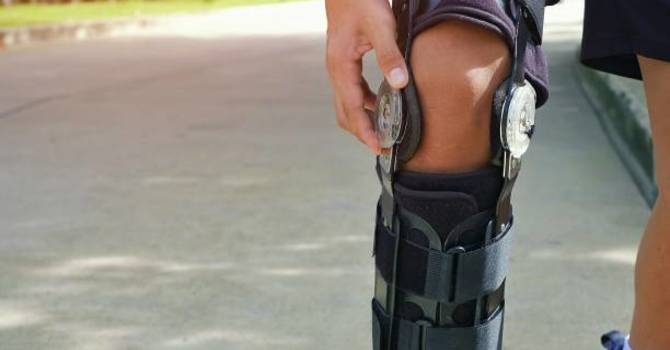
If you’ve been dealing with a meniscus tear, you’re likely familiar with the range of treatment options available, from physical therapy to surgical interventions. One treatment that’s been gaining attention in recent years is Platelet-Rich Plasma (PRP) injections. But how effective are PRP injections for healing a meniscus tear? Let’s break down what PRP is, how it might help with meniscus injuries, and what you should consider before opting for this treatment.
What Are PRP Injections?
Understanding PRP Therapy
Platelet-Rich Plasma (PRP) therapy is a regenerative treatment that uses components from your own blood to promote healing. The process involves drawing a small amount of your blood, which is then processed in a centrifuge to concentrate the platelets and growth factors. This PRP is then injected into the area of injury to stimulate the body’s natural healing processes.
How PRP Works
The concentrated platelets in PRP contain growth factors that can help repair damaged tissues. When injected into an injured area, such as the meniscus in the knee, PRP aims to accelerate healing by enhancing the body’s natural repair mechanisms. It’s a non-surgical approach that seeks to harness the body’s own healing potential.
Meniscus Tears: An Overview
What is a Meniscus Tear?
The meniscus is a C-shaped cartilage in your knee that acts as a cushion and stabilizer between the thigh bone (femur) and the shin bone (tibia). A meniscus tear occurs when this cartilage is damaged, often due to an injury or wear and tear. Common symptoms include pain, swelling, and difficulty moving the knee.
Treatment Options for Meniscus Tears
Treatment for a meniscus tear depends on the severity of the injury and the patient’s overall health. Traditional options include:
- Rest and Physical Therapy: Initial treatment may involve rest, ice, compression, and elevation (RICE), along with physical therapy to strengthen the muscles around the knee.
- Medication: Anti-inflammatory medications can help manage pain and swelling.
- Surgery: In more severe cases, surgical options like meniscectomy (removal of the damaged meniscus) or meniscus repair may be necessary.
Can PRP Injections Help with Meniscus Tears?
Potential Benefits of PRP
PRP injections have been explored as a treatment option for meniscus tears with promising results in some cases. Here’s how PRP might benefit individuals with meniscus injuries:
- Enhanced Healing: PRP injections aim to speed up the healing process by providing the injured area with a high concentration of growth factors that can repair the damaged meniscal tissue.
- Reduced Pain and Inflammation: By promoting healing and reducing inflammation, PRP therapy may help alleviate pain and improve function in the affected knee.
- Non-Surgical Alternative: For those who prefer to avoid surgery or are not candidates for surgical intervention, PRP offers a non-invasive option that can complement other conservative treatments.
Research and Evidence of PRP Injections
While some studies and clinical trials have shown that PRP injections can be effective for meniscus tears, results can vary. Research indicates that PRP may help with pain reduction and functional improvement, but more studies are needed to fully understand its long-term effectiveness and how it compares to other treatments.
What to Consider Before Getting PRP Injections
Consult with Your Healthcare Provider
Before deciding on PRP therapy, it’s important to consult with your healthcare provider. They can evaluate the severity of your meniscus tear and discuss whether PRP injections are a suitable option for you. Your provider can also help you understand how PRP fits into your overall treatment plan and what you can expect from the therapy.
Understand the Procedure
PRP injections are generally well-tolerated, but it’s good to be informed about the procedure. The injection process involves:
- Blood Draw: A small amount of your blood is drawn.
- Processing: The blood is processed in a centrifuge to concentrate the platelets.
- Injection: The PRP is injected into the area of the meniscus tear.
You might experience some discomfort or swelling after the injection, but these symptoms are usually temporary.
Consider the Costs and Availability
PRP therapy can be costly and may not be covered by all insurance plans. It’s worth checking with your provider about the costs and whether PRP is a covered benefit under your insurance.
Combining PRP with Other Treatments
PRP injections can be used in conjunction with other treatments, such as physical therapy or medications, to enhance overall results. Your healthcare provider can recommend a comprehensive treatment plan that includes PRP and other approaches to maximize your recovery.
Conclusion
PRP injections offer a promising option for healing meniscus tears by leveraging the body’s natural repair mechanisms. While research suggests potential benefits, including enhanced healing and reduced pain, individual results can vary. If you’re considering PRP therapy, consult with your healthcare provider to determine if it’s the right choice for you and how it can fit into your overall treatment plan. Whether used alone or in combination with other treatments, PRP may help you get back on your feet and moving comfortably again.
Dr. Devin Stone
Contact Me


